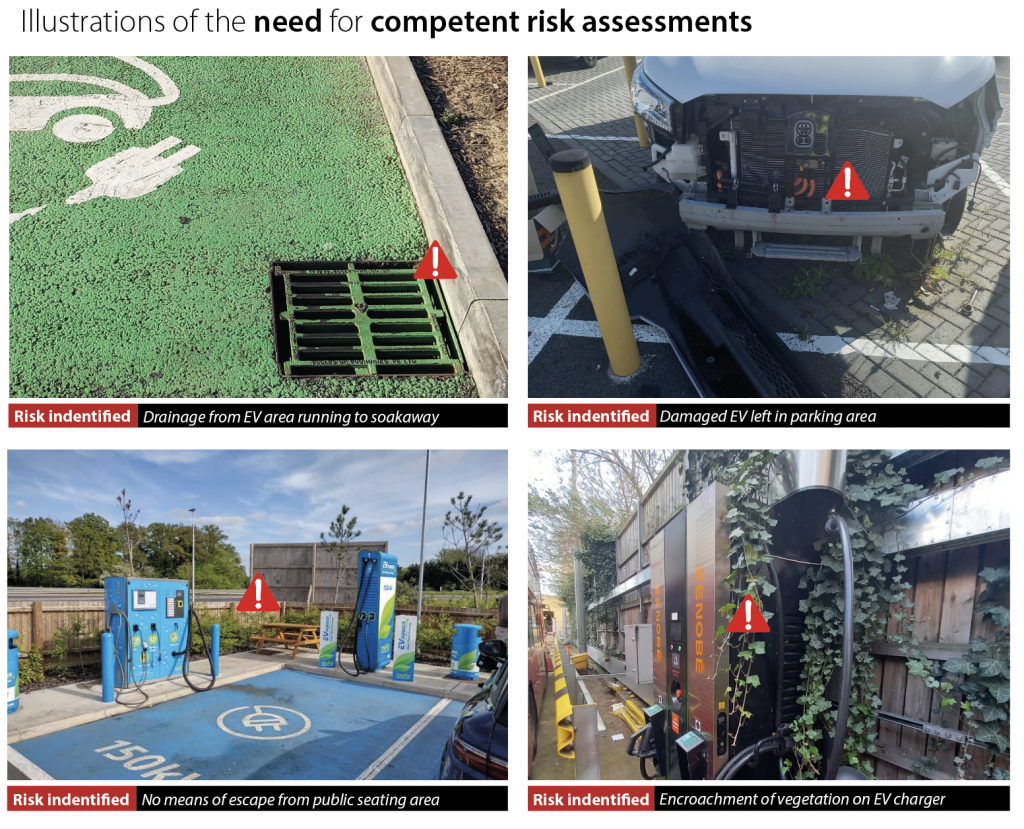Introduction
As the adoption of Electric Vehicles (EVs) accelerates across the UK, so too does the need for safe, well-planned charging infrastructure. At the forefront of addressing this challenge is EV-EXBOX, a UK-based consultancy that has been guiding organisations through the complexities of EV charging safety since 2016.
EV-EXBOX works with a broad range of clients—including infrastructure designers, installers, fleet operators, local authorities, and private businesses—providing expert risk assessments, tailored training, and practical guidance. While EV-EXBOX doesn’t believe EVs are inherently more dangerous than internal combustion engine (ICE) vehicles, the company is clear: EVs introduce new and unfamiliar risks that must be carefully understood and managed.
From car parks and basements to airports and fleet depots, the EV-EXBOX team has built a reputation for technical expertise, clear communication, and a no-nonsense approach to safety.
To learn more, Essential Fleet Manager spoke with Graeme Warnell, Director at EV-EXBOX, about the evolving risk landscape, what organisations should be focusing on, and the hidden pitfalls that could compromise safety, insurance, and compliance.
Interview
Q: Graeme, over the years, you’ve worked with a wide range of EV infrastructure projects. What common issues have stood out?
One thing that continues to surprise us is just how many installations have gone ahead without any competent risk assessment—we estimate well over 90% of EV charging infrastructure in the UK falls into this category.
That’s not due to negligence. It’s largely a result of the rapid evolution of technology, the pressure to deliver on net-zero commitments, and a lack of clear statutory guidance or industry-approved best practices. In many cases, organisations simply didn’t know what questions to ask.
Q: Do you believe EVs are more dangerous than traditional ICE vehicles?
No, not more dangerous—but they are different. That’s an important distinction. While EVs don’t necessarily bring more risk, they do bring new types of risk, and the industry still has a way to go in recognising and responding to those differences.
What we often see when we begin working with clients is that many organisations:
Are desensitised to the risks
• Have a limited understanding of what those risks are
• Lack the experience or systems to manage them effectively
• And are often unclear about who actually owns the risk

Q: So, what should organisations be focusing on when installing or managing EV charging infrastructure?
Several critical areas must be addressed as part of any comprehensive risk assessment. Here are the key considerations we highlight with our clients:
Training and Awareness
If employees are unable to recognise the early warning signs of a vehicle entering thermal runaway or are unaware of the factors that might increase the likelihood of thermal runaway, how can they respond safely?
Vapour Cloud Explosion
People often associate EV battery failures with fire, but the primary hazard is actually the off-gassing of flammable and toxic vapours from the battery pack. These gases can accumulate, posing a risk of vapour cloud explosions. It’s vital to consider how the location of charging points affects gas dispersion and the risks to critical infrastructure.
Fire Spread On-Site
While the total heat release from an EV is comparable to that of an ICE vehicle, the way heat is released—particularly during battery failure—can lead to much faster fire spread. A proper assessment should identify potential fire pathways between vehicles and surrounding structures.
Fire Spread Beyond Site Boundaries
Fires can cross boundary lines, especially in tightly packed or shared spaces. It’s not just flammable materials—some substances that might not be either flammable or combustible can react adversely to high heat. Landscaping, fencing, and neighbouring assets all need to be considered.
Contaminated Fire water Runoff
UK regulations on fire water contamination are robust, but many sites—especially large depots or hubs—lack a plan for managing runoff. This means that water used to extinguish fires can pick up pollutants from the fire scene and flow into the environment. We often find organisations are unaware of where their drains lead—either into the public sewer or directly into the environment.
Emergency Response Plans
The addition of EV charging points can impact existing emergency procedures. Charging zones must be assessed for proximity to fire escapes, muster points, smoking areas, or outdoor seating. Emergency plans need to be updated accordingly.
Emergency Services Access
Only the emergency services can effectively manage an EV fire, and access is critical. If vehicles, barriers, or poor site design hinder emergency response, an otherwise manageable fire can quickly become a major incident.
Q: That is a very comprehensive list. At what stage should organisations be thinking about these risks?
Ideally, at the design stage. That’s when you can make proactive decisions that avoid costly retrofits or vulnerabilities down the line. However, we also work retrospectively—many clients come to us with existing infrastructure that wasn’t properly risk-assessed, and we help them identify and close those gaps.
Q: What are the consequences of not getting this right?
The consequences can be severe. In the event of a significant incident, if it’s found that risks weren’t properly identified or managed, there’s potential for legal action, including prosecution of designers, installers, operators, or landlords. Insurance claims could also be denied if it’s clear that proper risk assessments were not carried out.
In summary…
Q: Do you have any final thoughts or advice for fleet operators?
What we’ve discussed today only scratches the surface. The key message is simple: don’t wait for something to go wrong before assessing the risks. Proactive risk management isn’t just about ticking boxes—it’s about protecting people, property, and your organisation’s reputation.
To learn more or to schedule a risk assessment, e: info@ev-exbox.com or visit: www.ev-exbox.com/

The above article was published in issue 5(2025) of Essential Fleet Manager Magazine.




